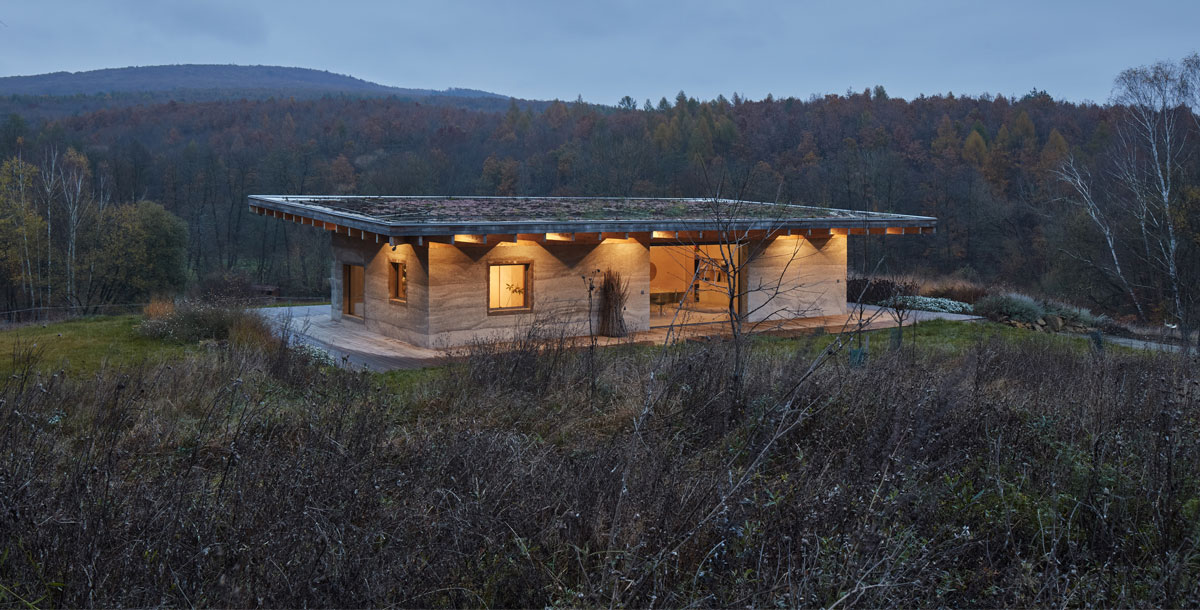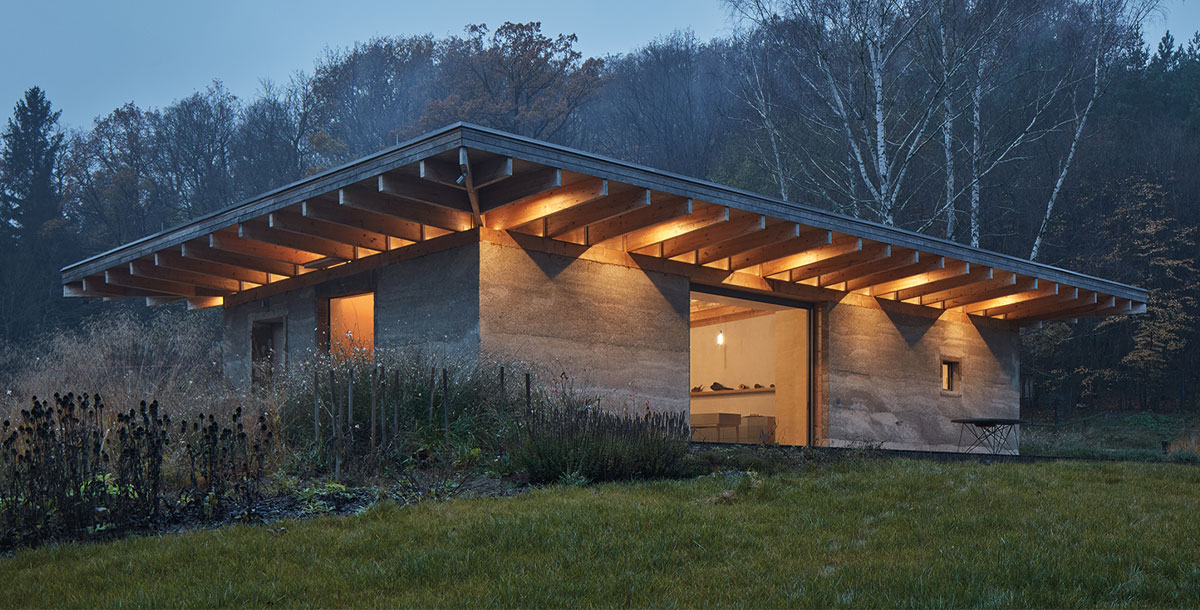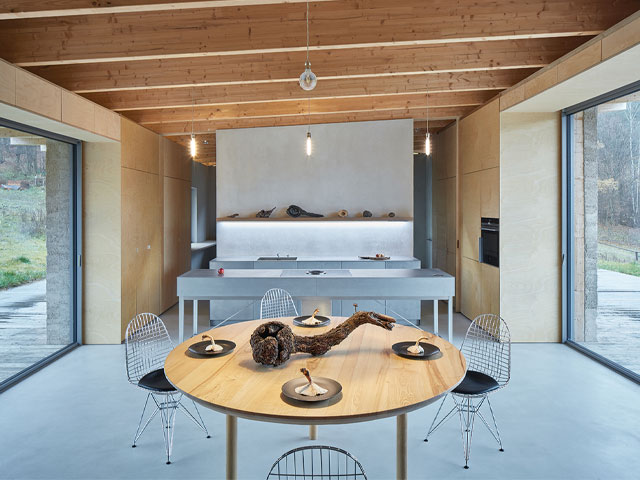A low-carbon hempcrete forest retreat
An experimental self-build using natural materials in the Czech Republic
Lina Bellovičová of Ateliér Lina Bellovičová aims to enhance the way people interact with the spaces they spend most of their time in. When it came to designing her own forest retreat, it was time to experiment with natural materials.
The result was a hempcrete house with two bedrooms, open-plan living space on the ground floor, photographic studio in the basement and green roof. The build cost was around £200,000. Grand Designs magazine finds out how it was done…
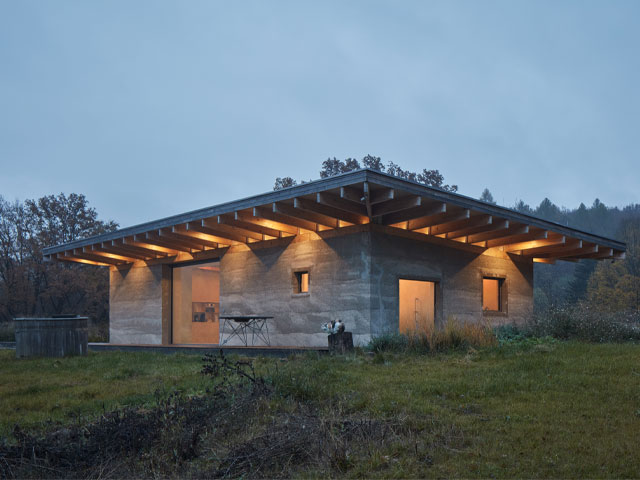
A broad overhang forms a sheltered terrace. Photo: BoysPlayNice
Why did you build this house?
The client was my boyfriend – now my husband – Ondřej Koníček, who owned a site in the middle of a forest in Buchlovice, near Smrad’avka, Czech Republic. He always dreamed of building a cabin to use as a winter retreat and photographic studio, and asked me to design it. He didn’t want to use any synthetic materials, so he suggested hempcrete, which was an experimental choice as it has never before been used to build a house in the Czech Republic.
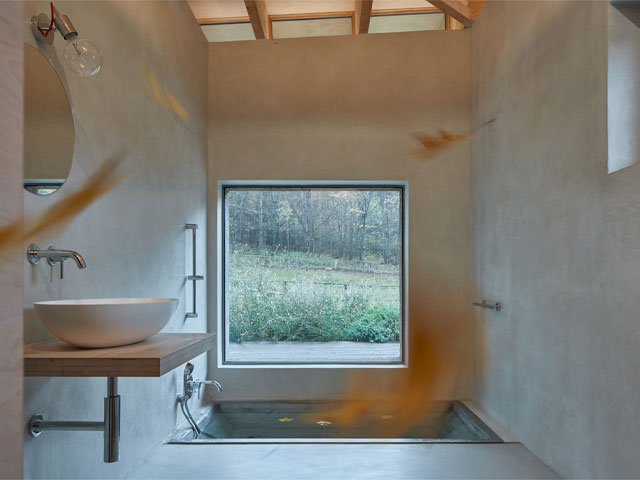
The bathroom looks out over the forest. Photo: BoysPlayNice
What is hempcrete?
It is a wet mixture of lime and hemp shiv – the chopped up, woody core of the hemp plant.
What are its advantages?
Hempcrete is different from eco-friendly building materials such as clay and straw as it petrifies over time, drawing carbon dioxide from the surrounding air and setting like stone. It is also resistant to pests, fire and mould, and is breathable, recyclable and highly insulating, locking away more carbon than is emitted during the building process.

